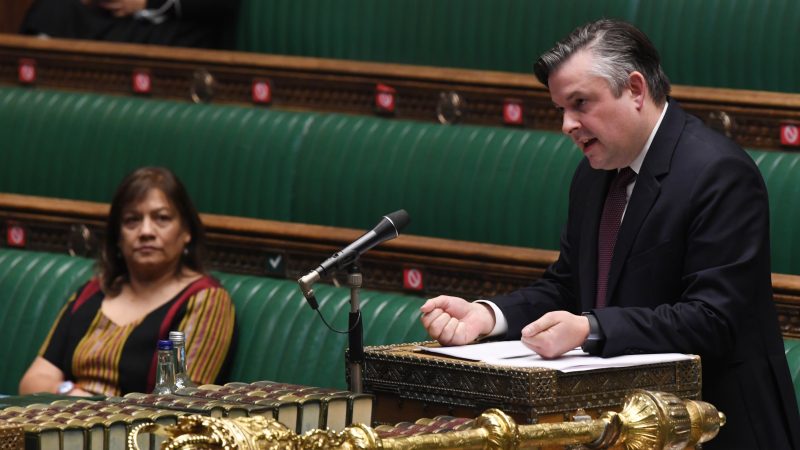
Labour’s Jonathan Ashworth has offered to do media appearances alongside Health Secretary Matt Hancock for displays of cross-party unity to promote the benefits of Covid vaccination and limit hesitancy among members of the public.
“This is indeed fantastic news,” the Shadow Health Secretary told the House of Commons today, commenting on the UK becoming the first country to approve the Pfizer/BioNTech coronavirus vaccine for roll-out.
Ashworth reiterated “vaccination saves lives”, before adding: “If it helps, I will stand alongside the Secretary of State – socially distanced, of course – on any platform or any TV studio to show that we are united cross-party in promoting vaccination.”
Hancock replied: “If we can together encourage anybody to take a vaccine who may be hesitant by appearing together and being vaccinated together, of course I’d be happy to do that. I recommend that we have a professional vaccinating us.”
Responding to the Covid-19 update this afternoon, the Shadow Health Secretary recommended that the government launch a large-scale public information campaign on vaccination and suggested sending a pamphlet to every household.
Ashworth also asked when the UK is expected to achieve herd immunity, for more details on the idea of a “freedom pass” and whether there would be a “route map” for which restrictions can ease as Covid-19 vaccination rates increase.
On the relaxing of rules, Hancock replied: “We don’t know the answer to that question.” He explained that while the vaccine protects individuals, its impact on reducing the spread is unknown as yet due to the problem of asymptomatic transmission.
On the questions of whether people will need to self-isolate after being vaccinated and whether the government is prepared to expand the eligibility criteria for the £500 self-isolation grant, Hancock did not offer answers.
The Health Secretary confirmed that “there will of course be a public information campaign”. Addressing the matter of health inequalities, he said “we absolutely need to reach all communities” with the vaccine but gave no specifics.
Asked how many will be vaccinated by January, Hancock could not say. He told MPs: “While today brings more certainty, it doesn’t end all uncertainties, because we have 800,000 that have now passed the batch-testing.
“The total number that will be manufactured over this timeframe is not yet known. It’s all dependent on a manufacturing process which is complicated itself. This is not a chemical, it is a biological product.” He said the answer was “as yet unknowable”.
Labour backbencher Angela Eagle asked whether Hancock shared the Prime Minister’s stated hope that the vaccine could be rolled out by Easter and whether the vaccine would become available again next year.
Hancock said: “The speed at which we can continue this roll-out will be determined by the speed at which Pfizer can manufacture and whether the AstraZeneca/Oxford vaccine is approved by the MHRA, of which we have 100 million on order.”
He added: “One of the reasons that we have 357 million doses from seven different vaccines is to be able to vaccinate further doses in due course, whether that’s through re-procurement of one of the existing vaccines or by switching to a different vaccine if clinically appropriate.”
On the promotion of Covid-19 vaccination, Downing Street has suggested today that Boris Johnson would also be willing to be vaccinated in public, though only if it did not prevent someone in greater need from receiving one.
The UK has pre-ordered 40 million doses in total of the Pfizer/BioNTech vaccine that has now been approved. This is enough to vaccinate 20 million people, as two doses 21 days apart are required per individual.
Around 10 million of the doses are expected to become available this year. It is hoped that other vaccines that have been pre-ordered by the UK – Moderna and Oxford – will also be approved in the coming weeks.




More from LabourList
‘The missing ‘B’ – the case for a national smartphone ban in schools
Labour members blame austerity and Brexit for economic problems – poll
‘Britain’s high streets need Community Investment Zones’